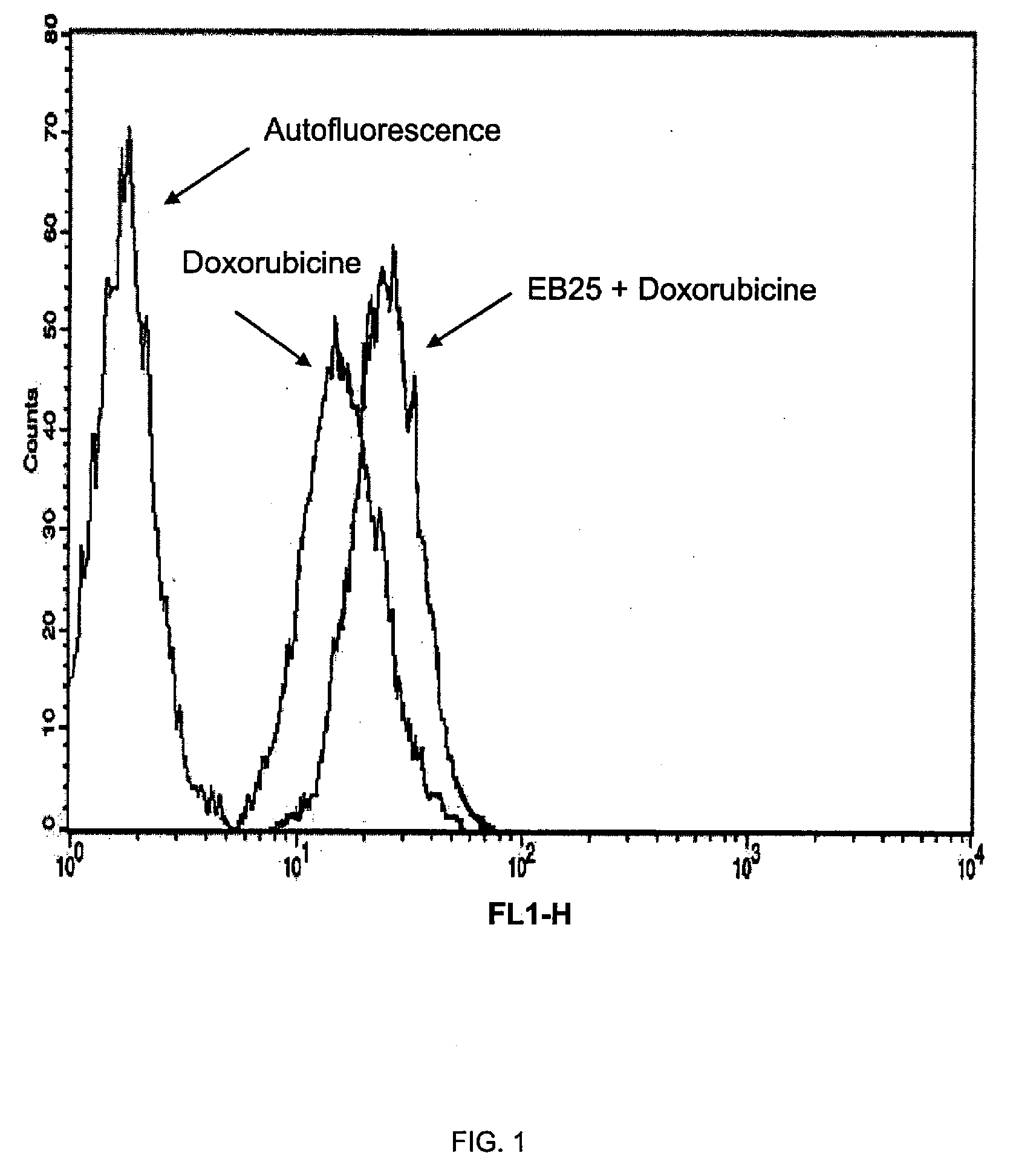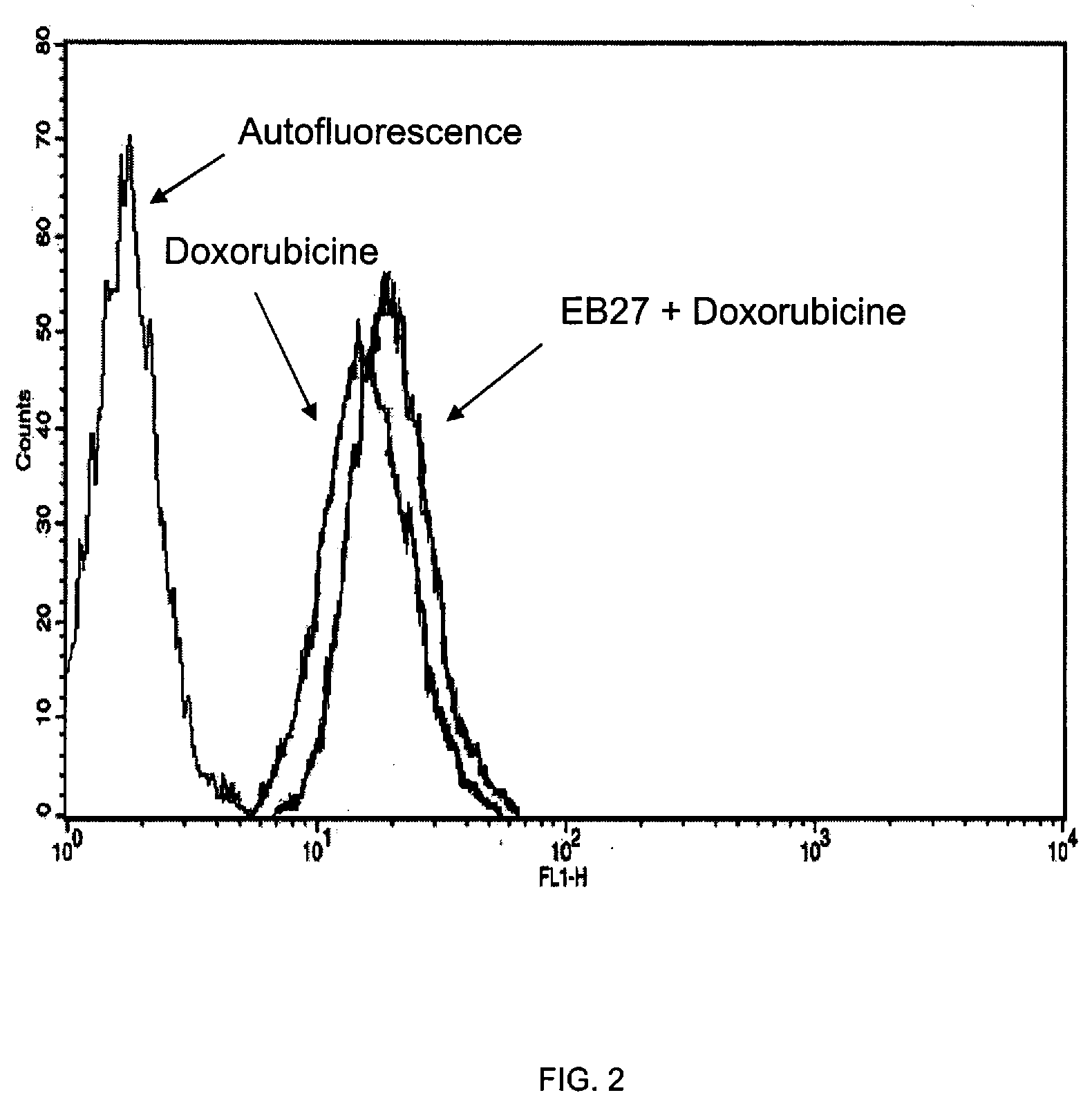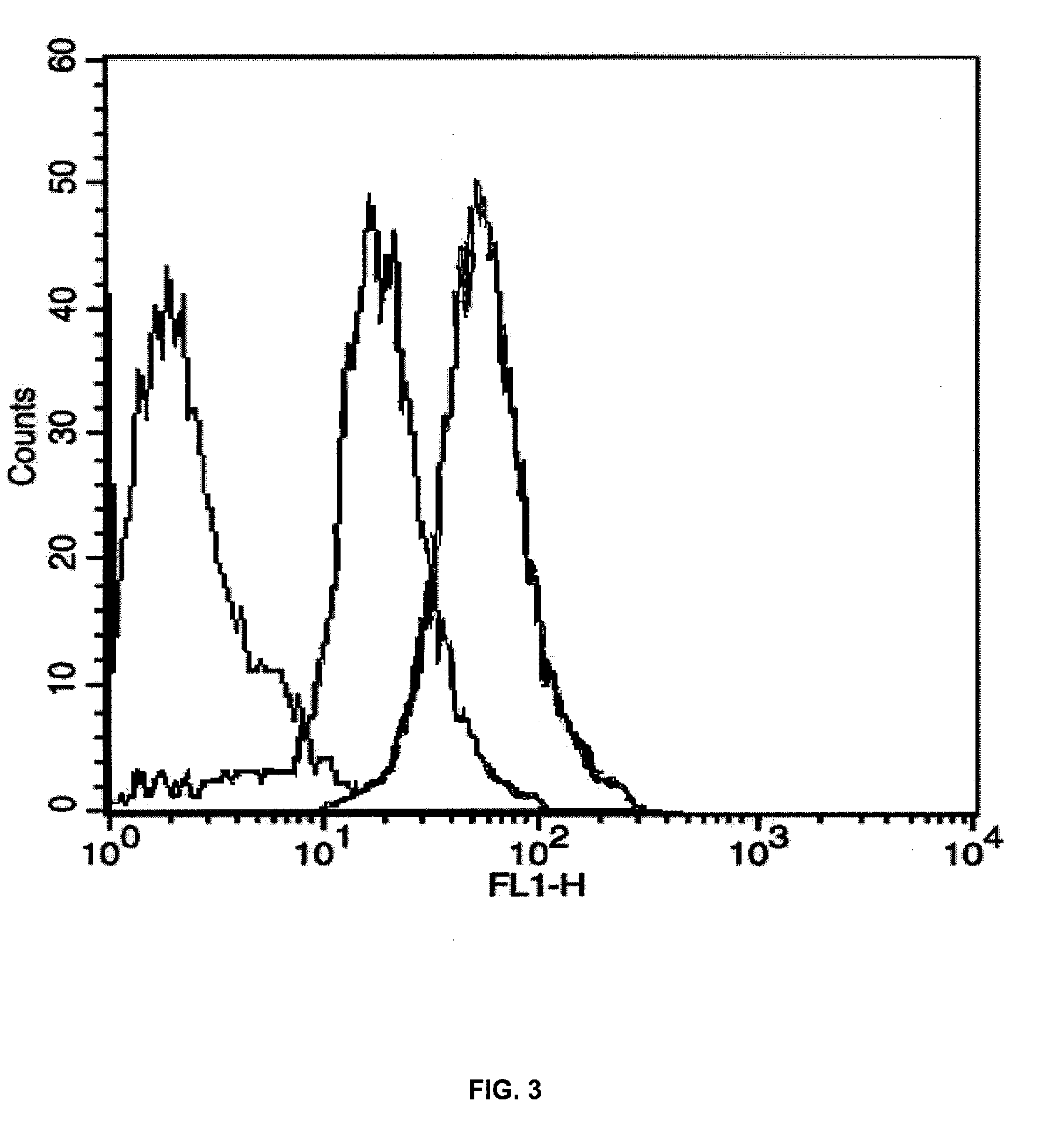1-phenylalcoxy-2-beta-phenylethyl derivatives as p-glycoprotein (p-gp) inhibitors useful in drug resistance events
- Summary
- Abstract
- Description
- Claims
- Application Information
AI Technical Summary
Problems solved by technology
Method used
Image
Examples
example 1
Evaluation of Inhibition Activity of Compounds EB25, EB27 and EB12
[0105]The compounds under examination (EB25, EB27 and EB12) at a 20 μM final concentration in complete medium (DMEM, 10% FCS) were added for 120 min to 20000 MCF7 / Adr (doxorubicin-resistant human breast carcinoma cells). At the end of the incubation, the incubation medium containing the compound under examination was removed, and fresh medium containing 50 μM doxorubicin was added for 24 h. The negative control consisted of plates containing an alike number of cells untreated with the compound. At the end of the 24 h, the medium was removed and the cells split and prepared according to standard procedure for flow cytometry analysis. The results, illustrated in FIGS. 1, 2 and 3, highlight that the 120-min pretreatment with compounds EB25 (FIG. 1), EB27 (FIG. 2) and EB12 (FIG. 3) and subsequent treatment with doxorubicin leads to an increase in the inletting of the latter in the cells. Such an increase is highlighted by...
example 2
(3-METHOXY)BENZYLTRIPHENYLPHOSPHORANE CHLORIDE SYNTHESIS (compound I, scheme A, intermediate)
[0106]A solution of 3-methoxybenzylchloride (5 g, 32 mmoles) and PPh3 (9.205 g, 33.93 mmol) in CH3CN (20 mL) was kept under stirring for 12 h under reflux. Thereafter, the solvent was evaporated under reduced pressure, the obtained compound was recollected with the minimum amount of CHCl3 and precipitated with ether.
[0107]The solid formed was filtered, giving the desired compound (98.5%).
[0108]1H NMR(CDCl3): δ 3.53 (s, 3H, OCH3); 5.44 (d, 2H, J=−16 Hz, CH2); 6.60-6.77 (m, 3H, Ar); 7.02 (t, 1H, J=7.6 Hz,); 7.11-7.21 (m, 15H, PPh3) ppm.
[0109]MS (m / z): M+—Cl 383 (16.1%)
[0110]Elemental Analysis:
C2H24OPClCHCalculated %74.196.23Found %74.286.40
example 3
2-[(E / Z)-2-(3-METHOXYPHENYL)VINYL]PHENOL SYNTHESIS (compound III, scheme A, intermediate)
[0111]1.8-diazabicyclo(5.4.0)-undec-7-ene (DBU) (2.30 ml) was added to a solution of (3-methoxy)benzyltriphenylphosphorane chloride (6.05 g, 14.8 mmol) and salicylaldehyde (1.81 g, 14.8 mmol) in CH3CN (22.7 ml). The reaction mixture was refluxed for 12 h, under stirring; thereafter the solvent was evaporated and the crude product, recollected with CHCl3, was submitted to washes with H2O and an 1N aqueous HCl solution.
[0112]The organic phase, dried, filtered and evaporated under reduced pressure, afforded a yellow oil that was not submitted to any further purification.
[0113]Yield: 89%
[0114]1H NMR(CDCl3): δ 3.84 (s, 3H, OCH3); 6.55-6.93 (m, 4H, Ar); 6.96-7.23 (m, 6H, Ar, CH═CH) ppm.
PUM
| Property | Measurement | Unit |
|---|---|---|
| Electrical resistance | aaaaa | aaaaa |
| Therapeutic | aaaaa | aaaaa |
Abstract
Description
Claims
Application Information
 Login to View More
Login to View More - R&D
- Intellectual Property
- Life Sciences
- Materials
- Tech Scout
- Unparalleled Data Quality
- Higher Quality Content
- 60% Fewer Hallucinations
Browse by: Latest US Patents, China's latest patents, Technical Efficacy Thesaurus, Application Domain, Technology Topic, Popular Technical Reports.
© 2025 PatSnap. All rights reserved.Legal|Privacy policy|Modern Slavery Act Transparency Statement|Sitemap|About US| Contact US: help@patsnap.com



